Honda CR-V Luggage Test: How much cargo space?
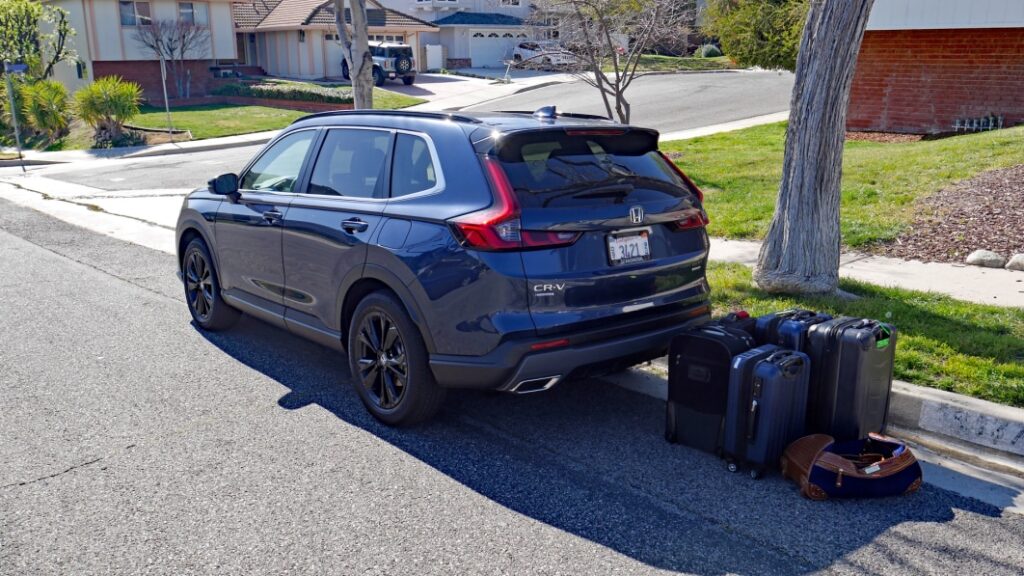
The Honda CR-V used to have the largest, most versatile cargo area in the compact SUV segment. No longer. The ballooned Hyundai Tucson and Kia Sportage surpassed the previous-generation CR-V, and continue to outpace the new generation. My luggage test of the Tucson and Sportage confirmed that, as did this one. So, ah, spoiler alert?
The specs say it has 36.3 cubic-feet of cargo space behind the second row regardless of powertrain (more on that later), which is indeed less than the Tucson, Sportage and Toyota RAV4 (a future luggage test will confirm that, spoiler alert again). Drop the seats down, and it’s in fact the overall cargo king at 76.5 cubic-feet, but in my opinion, that number is only useful if you intend to fill up the entire rear cabin to the roof with ping pong balls. I’ve yet to need to.
All that said, the CR-V can still swallow far more luggage than I own, which is the norm for this segment. If the CR-V has provided enough cargo capacity for you in the past, it will continue to do so in the future. Please don’t construe these tests and results to mean I advocate that bigger is better. We’re ultimately talking very minor differences here.
Before getting to the bags, let’s talk about a key point of difference between the gas-only CR-V, the CR-V hybrid, and various competitors. The CR-V has a fixed cargo floor, meaning that unlike the Sportage, Tucson, RAV4 and many others, you can not lower the floor to achieve extra space. This is also the case for the CR-V hybrid, which I tested, but it also does not have a spare tire. The Sportage Hybrid and RAV4 Hybrid do have spare tires despite packing batteries, while the Tucson Hybrid does not.
Basically, while the presence of a spare tire doesn’t impact cargo versatility, it does obviously mean you don’t have a spare tire.
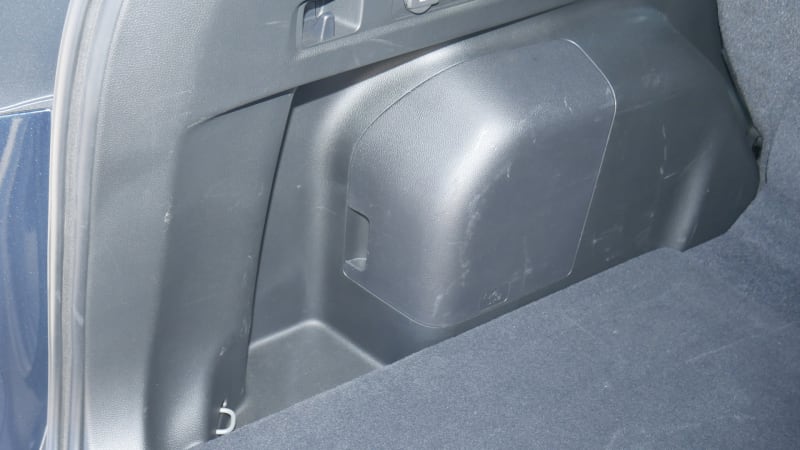
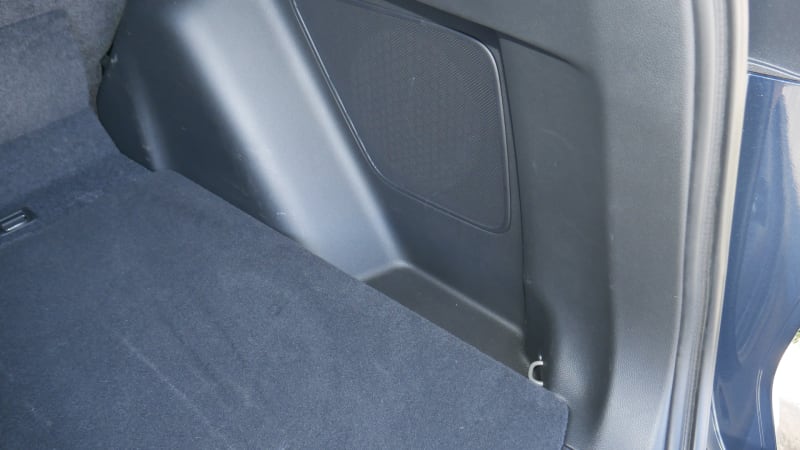
There is some storage on the sides, but it’s not particularly useful and consists of hard, slippery plastic. This is illustrative of the fact that the CR-V’s cargo area is voluminous but not clever in any way. The cargo floor certainly doesn’t double as a picnic table with a drainable compartment below as in the first- and second-generation CR-Vs.
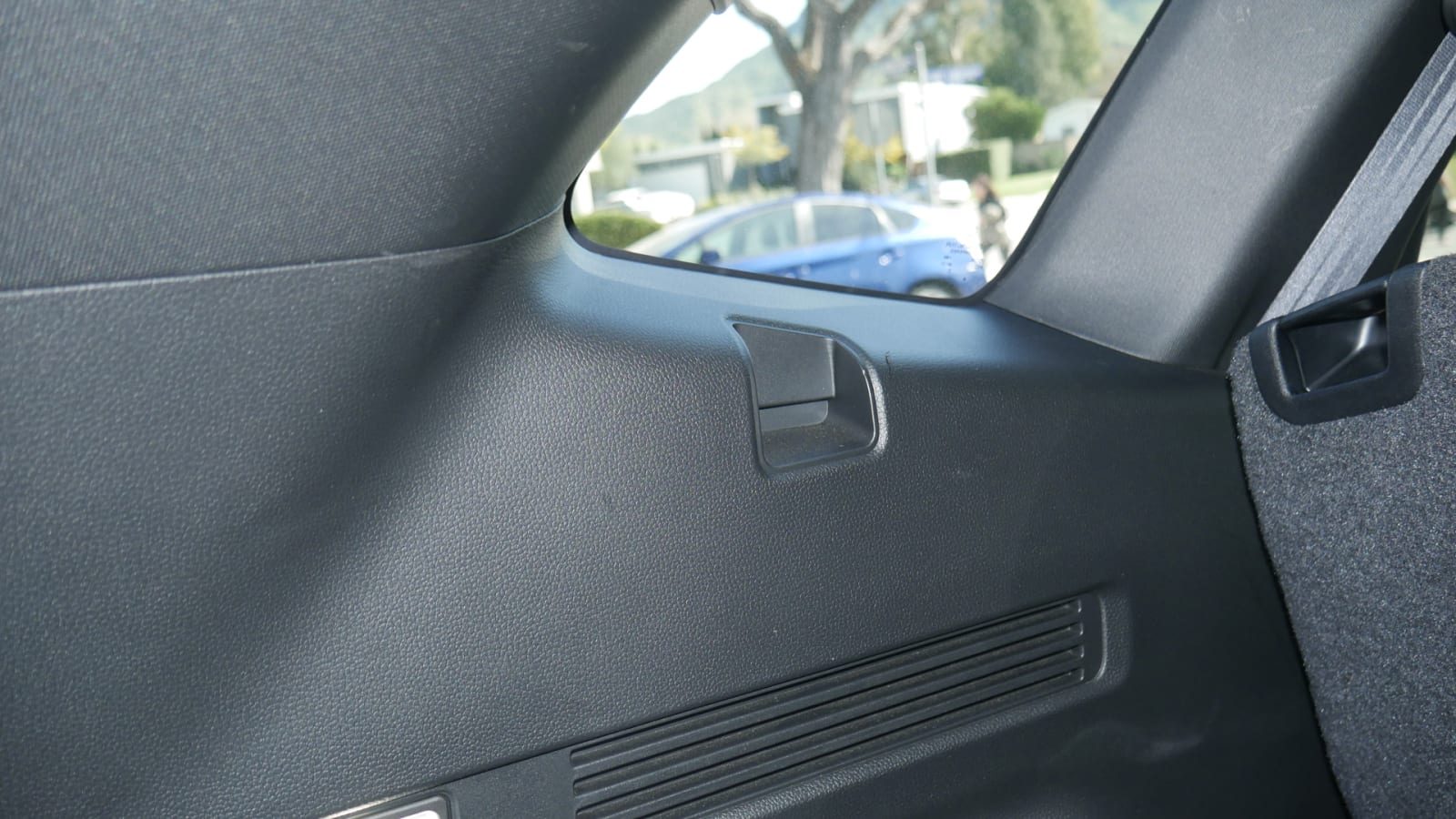
The CR-V is available with a cargo cover, but this test car didn’t come with it. Unlike the Kia and RAV4, there wouldn’t have been anywhere to store it in the CR-V, meaning I would’ve tested it with and without the cargo cover in place. As such, we’re just getting the without test.
OK, bring on the bags. As in every luggage test I do, that means two midsize roller suitcases that would need to be checked in at the airport (26 inches long, 16 wide, 11 deep), two roll-aboard suitcases that just barely fit in the overhead (24L x 15W x 10D), and one smaller roll-aboard that fits easily (23L x 15W x 10D). I also include my wife’s fancy overnight bag just to spruce things up a bit (21L x 12W x 12D).
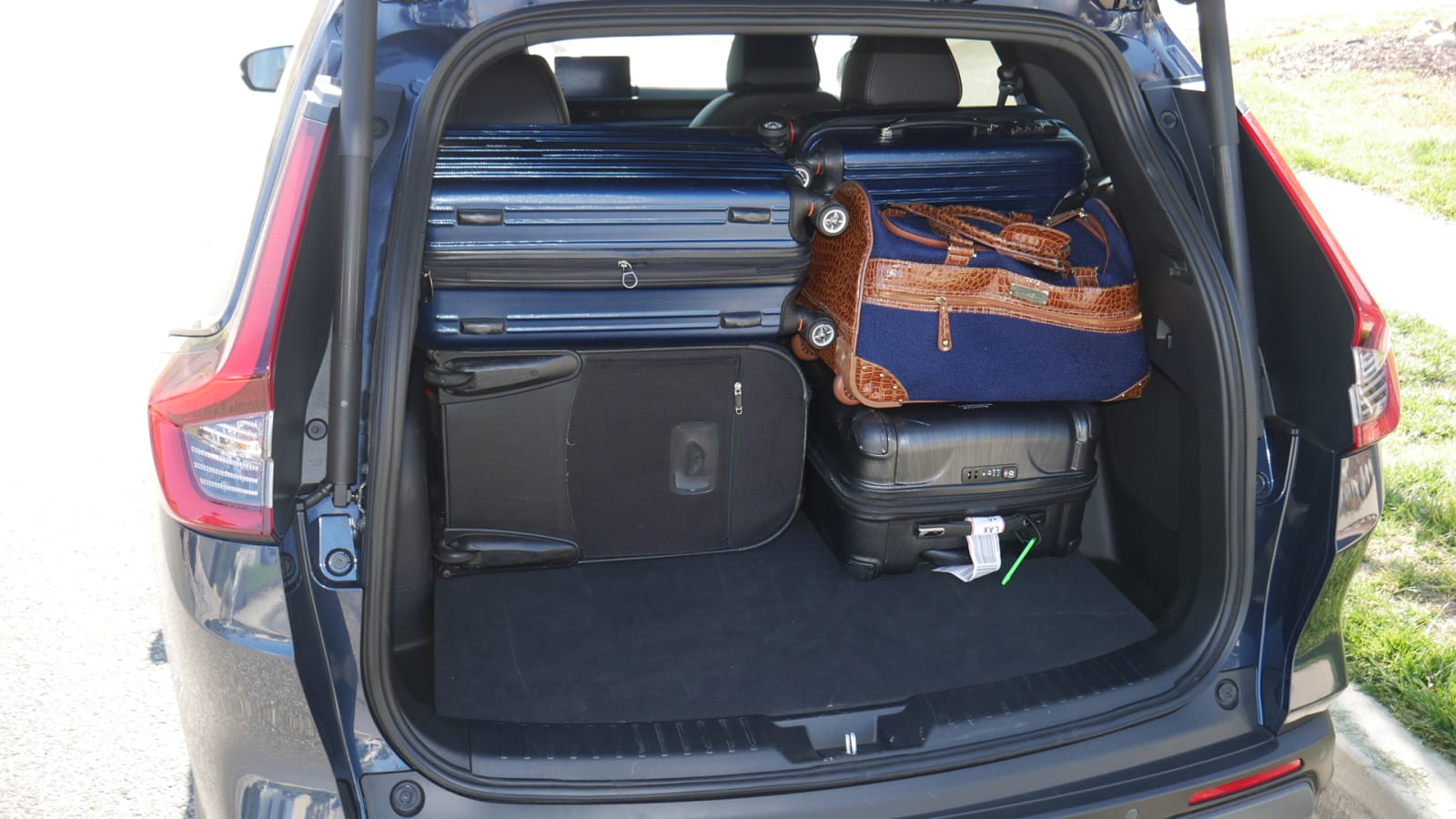
No problem, they all fit with loads of room to spare. It does look like there’s a bit less leftover space than the Tucson (below left) utilizing its lowered floor, and I honestly can’t tell with the Sportage (below right) as I did some wackadoo bag Tetris with that one. Stay tuned in future weeks for RAV4.
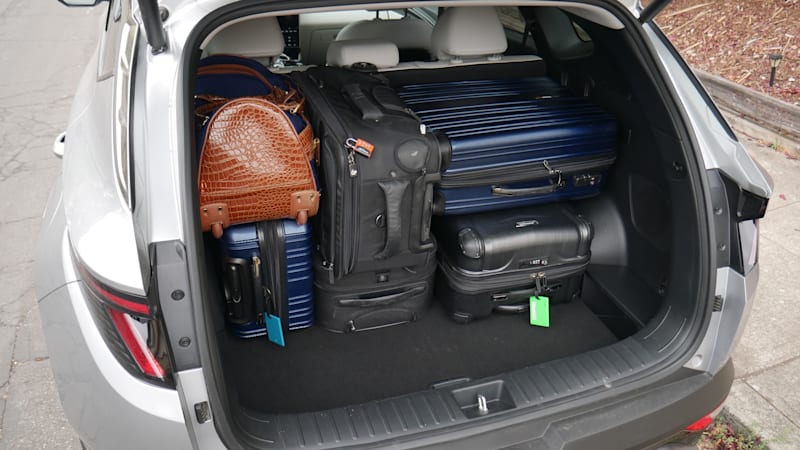
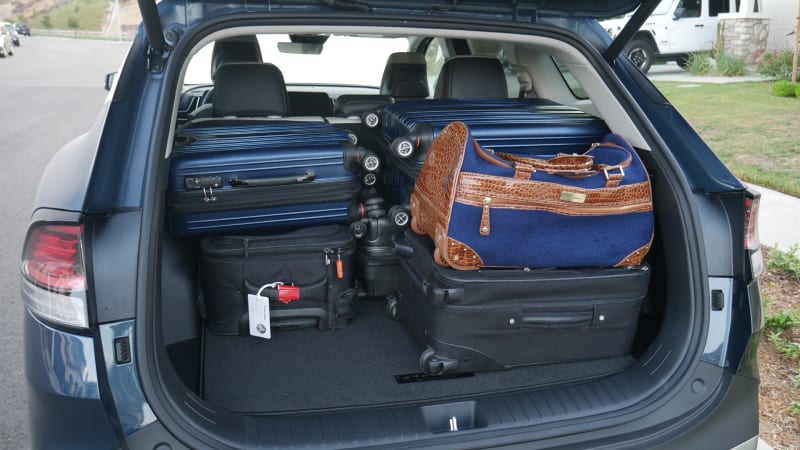
OK, so now let’s try and fill in that space. This is where my unscientific method really breaks down cause I didn’t use the same maximum gear for any of these cars. All of these were tested in the course of moving from Portland to Southern California, so some bags went into storage or boxes during these tests.
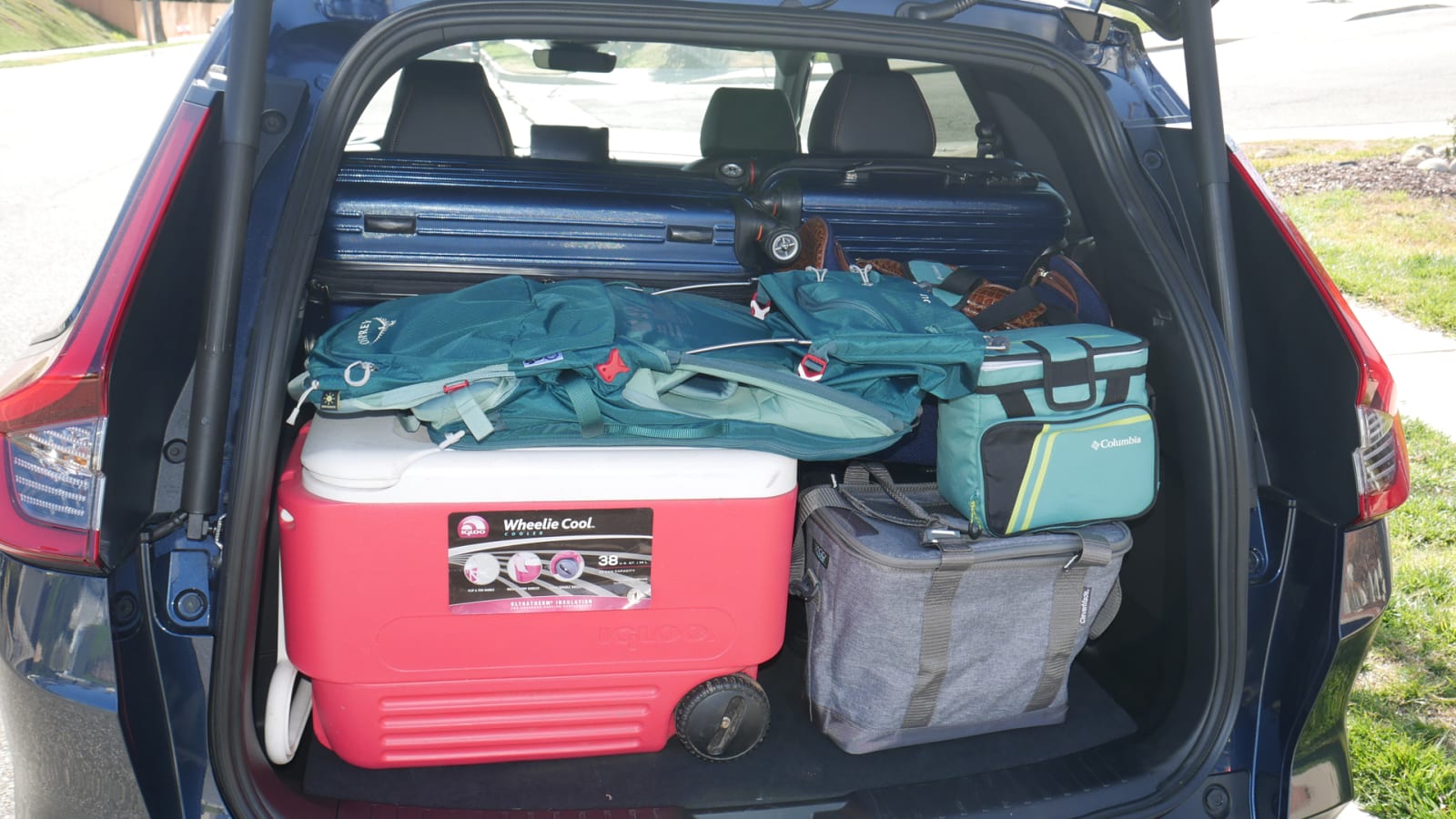
The 38-quart cooler fits in the them all, and I also managed a medium-size soft cooler, a small cooler and a hiking child carrier backpack (teal thing). There’s still room to spare, obviously.
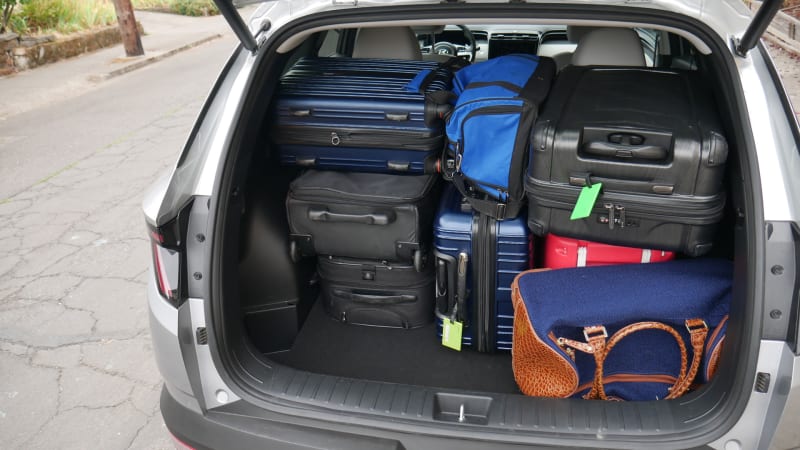
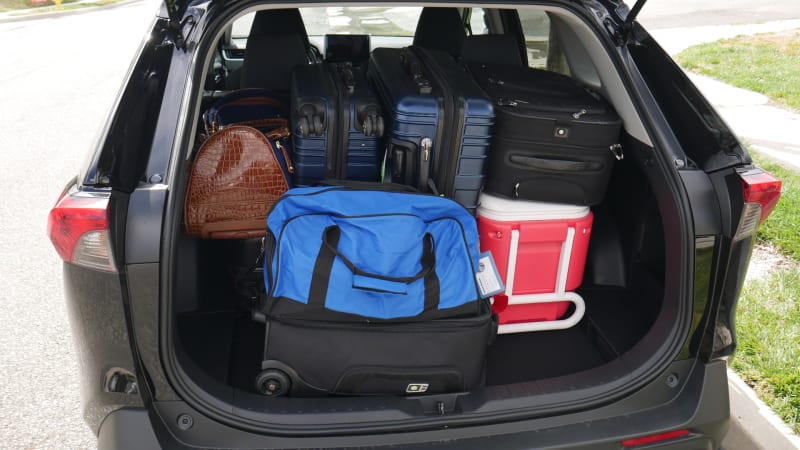
For what it’s worth, here is the Tucson and RAV4 with the same extra items as each other. Both are also utilizing their lowered load floor. Judge for yourself, but it does look like they have more space than the CR-V.
Again, it’s a minor difference in overall space. I think the biggest thing to consider is the CR-V’s lack of a dual-level floor and spare tire.
Related video:



